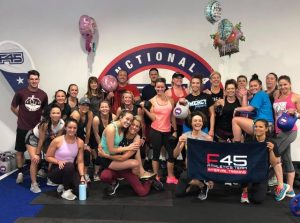
F45 Training, a popular bootcamp style fitness studio originating in Australia, is taking Louisville by storm with 3 locations opening within months of one another in Middletown, Crestwood and St. Matthews. Kentucky’s first three F45 fitness studios are female owned and operated. Fitness enthusiast and orthopaedic surgeon Stacie Grossfeld partnered with certified personal trainers Kim Postema and Melissa Goodlett to bring the international fitness chain to the city of Louisville, Kentucky.
Founded in 2011 in Sydney Australia as a solution to the rut many people get into in a normal gym setting, the intense 45-minute F45 fitness circuit has gained in popularity around the globe with thousands of locations open worldwide. Most recently high-level investors like Mark Wahlberg are signing on having personally realized the benefits of the program’s innovative approach to training which combines unique and varied fitness routines with structure and accountability.
As a sports medicine doctor and orthopedic surgeon, Dr. Stacie Grossfeld sees this business endeavor as a natural coupling to her daily work where she strives to promote an active healthy lifestyle to patients of every age. As a competitive tennis player, and avid skier and cyclist, Dr. Grossfeld is a lifelong athlete and passionate advocate of the benefits of physical activity. “I believe being a competitive athlete makes me a more effective sports medicine doctor. I can relate to my athletic patients on a more personal level. It’s just so important to be mobile and pain free and I try to help my all patients achieve this goal.”
About the Co-Owners
Seeing the difficulty so many people have in maintaining an ongoing fitness routine, and knowing the benefits that a sense of community can make in this effort, getting involved in F45 Training seemed like a natural fit for Dr. Grossfeld. “This unique approach to fitness impressed me because of how much gets accomplished in just 45 minutes. F45 takes the guesswork out of training and it also makes it fun. And the instructors know how to really motivate everyone to push harder. When an opportunity arose to bring this to Louisville, I knew that I had to be involved.”
Certified Fitness Trainer Melissa Goodlett brings a lifelong love of health and fitness to her work at F45. Talking about her decision to become a co-owner of F45, Melissa explains: “I love helping people reach their health and fitness goals! Anything is possible with a positive attitude and hard work! I’m grateful every day that my job is to motivate, inspire, teach and help people change their lives for the better!”
Growing up playing many different types of sports, F45 co-owner Kim Postema combines a love of physical activity with a passion for working with people. Describing her work at F45, Kim states: “I truly love motivating people to make changes to be healthier! Come see me and the whole F45 Training team at one of our Louisville-area locations. Our F45 workouts really are amazing!”
Why F45?
F45 training facilities are designed to make obtaining a great workout as easy as possible. Exercises feature movements that support day-to-day activities such as lifting, squatting, jumping and twisting motions among many others. While F45 stands for functional training, workouts also incorporate high intensity interval training and circuit training. This combination of rapid-fire exercises, strength training, and cardiovascular endurance is thought to be most effective for burning fat and building lean muscle.
With over 30 themed workouts and thousands of variations, members never do the same routine twice. Stations are stocked with items like barbells, ropes, rowing machines, mats, stationary bikes, sandbags and balance trainers. Each class is led by up to 2 coaches, and lasts just 45 minutes.
F45’s Middletown location officially opened its doors on April 20th following a ribbon cutting with Mayor Greg Fischer and Karl Schmitt, CEO of the Louisville Sports Commission. Both Crestwood and St. Matthews locations are expected to open in June of 2019. Members of the Middletown, Crestwood and St. Matthews studios can attend classes at the location nearest them while also enjoying access to all three facilities.
Embracing the group fitness mentality, the F45 experience is known to offer rapid results in a safe and encouraging environment. For a limited time, those interested in a fast paced, fun workout can take advantage of a free 7-day trial. While fitting in a full body workout can be challenging, the F45 model provides a structured and proven routine all in a realistic time frame. Additionally, trainers are always on hand to help participants utilize proper technique and form.
To receive a 1-week free trial, and special introductory pricing at the Middletown location, sign up here.

About F45 Fitness Studios
Originating in Sydney, Australia in 2011, F45 is an international fitness chain offering a structured, quick and team like approach to traditional exercise classes. Functional boot camp style classes are offered in 45-minute sessions. Kentucky’s first three franchise locations are located in Middletown, Crestwood and St. Matthews, Kentucky.
To learn more about the Louisville, KY-based F45 Fitness Studios, each location has its own Facebook page.
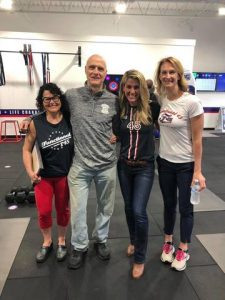
About Dr. Stacie Grossfeld
Dr. Stacie Grossfeld is one of three female F45 franchise owner operators in Middletown, Crestwood, and St. Matthews, Kentucky. She is also the owner of Orthopedic Specialists, a sports medicine and orthopedic surgery practice located in Louisville, Kentucky. Dr. Grossfeld is double board certified in orthopedic surgery and sports medicine. A graduate of the University of Louisville School of Medicine, Dr. Grossfeld served her internship and residency at the University of Minnesota and completed a fellowship in Sports Medicine at the Fowler- Kennedy Sports Medicine Center. In addition to her private practice, Dr. Grossfeld serves as a team doctor for the South Oldham Dragons. She is also an Assistant Clinical Professor at the University of Louisville.
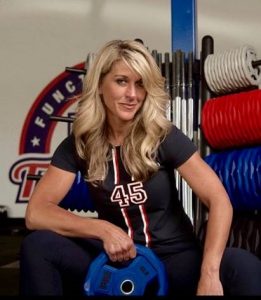
About Melissa Goodlett
Melissa Goodlett, an F45 owner and trainer at F45 Middletown, is thrilled to be a part of the F45 fitness franchise and is excited to see Louisville growing in fitness opportunities. Melissa began her career as a teacher but spent 12 years managing a team of sales reps for Depuy Spine. After deciding it was time for a career change and having a lifelong love of health and fitness, she decided to pursue her personal trainer certification. Melissa is a Certified Personal Trainer through the National Association for Fitness Certification. She has her group fitness and nutrition certification as well and has been working in the fitness industry for almost 5 years. She first got her start as a coach and then Head Trainer at Orangetheory Fitness.

About Kim Postema
F45 owner and trainer Kim Postema is originally from Michigan. She grew up playing many different sports. While in college she began distance running and has now completed 5 marathons including “The Goofy” at Walt Disney World. She studied accounting and is a CPA but got into the fitness industry after her 3 children were born. While she initially started as a Bodypump instructor 13 years ago, she later became certified in spinning, barre, yoga and TRX. She has worked for the YMCA and Orangetheory Fitness. She holds her CPT license through the National Academy of Sports Medicine (NASM) and her group fitness certification through the Aerobics and Fitness Association of America (AFAA).
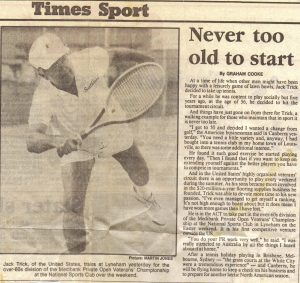
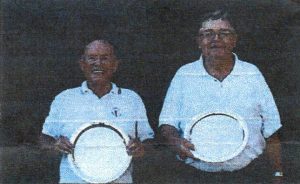
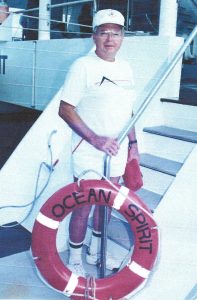


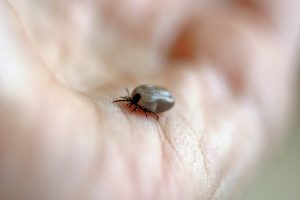
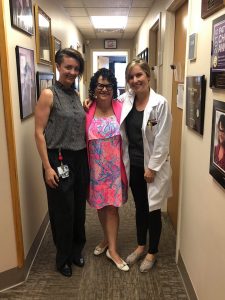
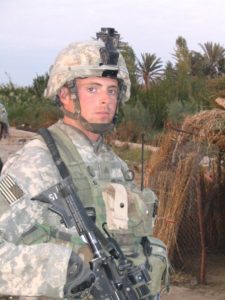








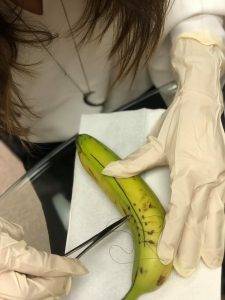
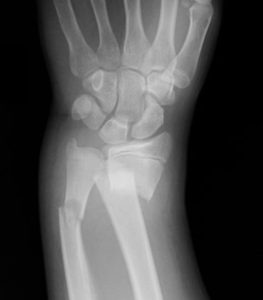

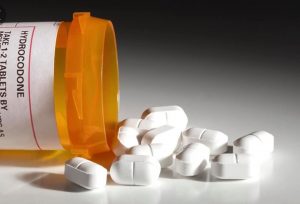

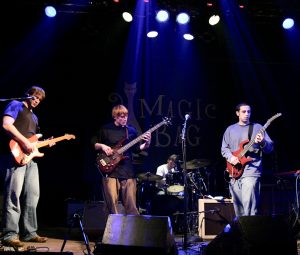

Recent Comments